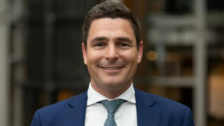Jekyll and Hyde, one and the same
Why have risk assets been so buoyant since April? No shortage of opinions, but as always there is no simple answer, nor will the next months be dictated by one trend. Judging what likely determinants might be and by giving credence to others that appear possible at least provides one with a sensible base case. Below are those that have been our stalwarts to date and then, within that aspect, what could (or could not) change.
Central bank intervention is clearly key, in the signal rather than the noise. The Fed, for example, has spent only a fraction of what it can. After all, why should it do so when market participants will? Private investors assume the Fed would step into corporate debt, and therefore could invest in the knowledge that this buffer would be in place.
For the coming months, central bank support should be taken as a given. It is unimaginable they will not provide a floor for rates and liquidity into debt markets. The status quo rules.
Optimism plays a good part – The lockdown will end, a vaccination is likely, case numbers are declining (at least in some countries), treatment options are proving reliable etc.
This may be a little harder to sustain. While the sheer number of possible vaccines under trial implies success, the impact on lifestyles is broader. Employment insecurity, which is now infiltrating more broadly into many business sectors, high debt and psychological knock-on confidence paints a tough path for many households. Cyclical stocks would be one for the bulls.
Few winners – Some companies have had a significant win from the downturn. Their business models were suited and now can build upon a pattern of behaviour that was already in train.
No question that the winner circle has been corralled and heralded. There is, however, the niggling feeling that it assumes all these companies deserve stratospheric valuations. Rarely has this been a smooth ride, and only the best of breed become the real thing. Unsurprisingly, factor-style trends show that growth has led the charge, but worryingly, quality as a factor has been weak.
Fiscal policy – Fiscal handouts have been a big buffer to income and given voting patterns, they are likely to be around for some time.
The problem with the reliance on governments to build economic momentum is that evidence is messy. Throwaway lines on “shovel-ready” infrastructure hint at poor allocation of capital. At a household level, a minimum basic income may become the norm, possibly restructuring of casual work. Yet most current governments will want to paper-over cracks rather than make meaningful changes.
Investor behavior – Then there are the investors themselves. The speed of reaction to central banks, investment flows and traders is fast-paced compared to the snail-pace adaption and trading of past decades. There is plenty of cash in many parts of the market, not least in private equity and debt. Excess savings is still looking for a home.
What will therefore change in coming months?
Central bank support remains a high certainty. Investor flows are unreliable yet seek out any prospect of a return. Household sentiment could come under increasing pressure as longer-term realities become evident, unless there is a vaccine that puts COVID out of action. Election pressure is already evident in the US. The likelihood is that the key issue will be whether economic activity can restart and recover. Without that, there is a rising probability that equities have run too hard ,and the other factors will be insufficient.
Maybe isolation is not that unattractive after all given a messy world and no point in hiding that from investors.
As an aside, there are as many interpretations of markets as there are for Stevenson’s novella ‘Strange case of Doctor Jekyll and Mister Hyde’. The relevance to investments is that there is no Mr. Hyde, rather it is Dr. Jekyll acting on urges unseemly to his status. Reflect on where that applies to markets today.











